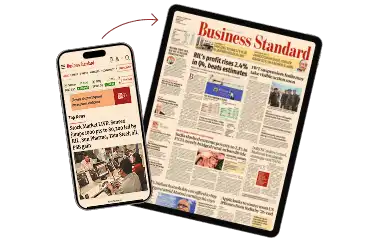Prime Minister Narendra Modi’s 50-day deadline for demonetisation’s ill-effects is here. What has been the experience so far? Perhaps no economic policy decision in India’s history has had so swift and so pervasive an effect on India’s citizens. Cash is the one way in which even the most disconnected of Indians interact with their government. They may not have access to government schools, they may struggle to get their food ration or their pension – but they all hold little pieces of paper with the signature of the governor of the Reserve Bank of India on it.
Fifty days in, it’s clearer than ever exactly how big a gamble the Modi government took on November 8. Withdrawing 85 per cent of a country’s cash by value has extraordinarily deep and wide effects. Nor are the first-order effects necessarily the most significant. Beyond the simple rationing of cash, there are behavioural changes that will need to be taken stock of.
Perhaps, the biggest lesson of the 50 days of demonetisation has been how willing Indians are to accept great inconvenience if they believe it serves some greater good. The reports are almost universal: people are angered by the “mismanagement”, but are not yet ready to turn on the decision itself. The idea that someone has finally made a strike against black money is a powerful one, and one that’s sufficient to ensure that the prime minister – who is personally associated with the decision – remains as popular as ever he was.
Still, it has become clear in the past weeks that the holders of black money have not been as greatly inconvenienced as the government would like to claim. In the first days, individuals holding cash were forced to take largish discounts on their stocks; those discounts have gone down over time.
Moreover, in spite of the government’s declaration to the contrary, little has been done to slow the creation of new black money. Unaccounted wealth is created by the structure of the tax system, and by other poorly designed regulation. The creation of black money will not have skipped so much as a heartbeat – as the increasingly large seizures of piles of new notes should make clear.
Indeed, over the past 50 days, the government has telegraphed its next move: it believes that black money has been forced into the open, and it will now use the overground trail to go after past holders of black cash. It also means that a generalised fear has settled over those who, for legitimate purposes, must hold cash. Fear of the raid Raj has spread across the country.
It’s interesting to observe exactly how many supply chains in the Indian economy contain a cash-dependent segment somewhere in them. As has been widely reported, the prices of vegetables have crashed – this is not just because of a good crop, clearly, but because of a shortage of cash at mandis.
Given the cash-dependent nature of these segments of supply chains, it is difficult to argue with the contention that, in the first 50 days, India has just been exposed to the first-order effects of demonetisation. Over time, the second- and third-order effects – the disruption of supply chains, and behavioural changes – will begin to show themselves. Immediate inconvenience may be easing, but 50 days in, the ill-effects of the decision of November 8 show no signs of being fully spent.
One subscription. Two world-class reads.
Already subscribed? Log in
Subscribe to read the full story →

Smart Quarterly
₹900
3 Months
₹300/Month
Smart Essential
₹2,700
1 Year
₹225/Month
Renews automatically, cancel anytime
Here’s what’s included in our digital subscription plans
Exclusive premium stories online
Over 30 premium stories daily, handpicked by our editors


Complimentary Access to The New York Times
News, Games, Cooking, Audio, Wirecutter & The Athletic
Business Standard Epaper
Digital replica of our daily newspaper — with options to read, save, and share


Curated Newsletters
Insights on markets, finance, politics, tech, and more delivered to your inbox
Market Analysis & Investment Insights
In-depth market analysis & insights with access to The Smart Investor


Archives
Repository of articles and publications dating back to 1997
Ad-free Reading
Uninterrupted reading experience with no advertisements


Seamless Access Across All Devices
Access Business Standard across devices — mobile, tablet, or PC, via web or app
)

